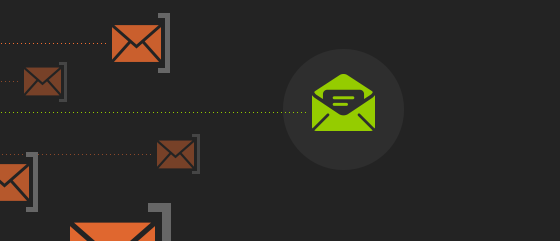There are lots of resources at our disposal when it comes to facilitating and managing communication during the web development process. At Newfangled, we’ve experimented with and researched several tools on the market and even developed our own software to manage internal communication. However, we still find that we most often rely on good, old-fashioned email in the majority of our interactions with clients during the web development process. The trouble with this is that even though email is a familiar tool to the majority of us that we use on a daily basis, we still make careless mistakes with this technology that can cost us valuable relationship equity with our clients.
I was recently reading a book called Daring Greatly, which… has absolutely nothing to do with web development. BUT, as I read a section of the book in which the author, Brene Brown, recounts an unfortunate email exchange, I was reminded of the potential hazards of using email as our primary communication tool with clients. She had politely declined an invitation for a speaking engagement and in return, received an extremely rude and critical email response from the inquirer, who was so seemingly offended by her taking a pass that he felt obligated to launch a personal attack on her character. Feeling the need to vent (to put it politely…) she forwarded the email to her husband with some choice words about what she thought of the unwarranted response. She clicked the send button and immediately realized that she had clicked “reply” instead of “forward”. Ouch.
We may not all have a personal experience as dramatic as this, but my guess is that we all have our own little anecdotes on lessons learned the hard way. In this post, I’ll share a few of my own in hopes that you can learn from my mistakes and faux pas (and those of my digital correspondents as well) and have some helpful tips to keep in mind as you use email to facilitate communication during the web development process.
Only reply if you actually want to reply
I recently got an email from a client who had added me to an email string that had clearly been taking place long before I’d been brought in the loop. At some point, an issue came up that required my attention and the client simply replied to the last email of the string and added me to the list of recipients with a message that read something like “Can you take a look at the issue outlined below and let me know if this can be fixed?” Replying to the previous string is a time saver – it gives me the ability to read through the history to make sure that I have all the info I need to understand and diagnose the problem without the client having to write a new email detailing the issue. That seems like a win-win, right?
Well…right unless said history contained something that the new recipient wasn’t intended to see. Which this history did. Yikes!
We’ve all said things that we wish we could take back later or had that nauseating “she’s standing right behind me, isn’t she?” moment right as we made a critical comment about someone else. It happens and the world doesn’t end (usually…). But sometimes the extra five minutes it saves you to copy and paste part of an email into a new message for a new recipient is totally worth it. If you’re not OK with the person you’re emailing getting the entire history of en email, don’t click reply.
Saving your draft is not the same as sending it!
Have you ever been searching through your sent mail thinking “I know I told them about that…” only to find your carefully written email safely tucked away in your drafts folder? Yeah…that’s happened to me more times than I care to admit. Sometimes it doesn’t end in disaster – the email didn’t contain high priority information and I can simply explain my blunder and apologize for the slight delay. But in less fortunate cases, the client needed to hear that important update on the schedule of their project or the reminder about an upcoming deadline last week when you wrote the email as opposed to this week when the deadline has already passed. Make a habit to take a look at your saved drafts before you sign off at the end of each day to make sure there aren’t any messages hiding in there that don’t belong.
Copy and paste…with caution.
At Newfangled, the project managers tend to have the most interaction with our clients. This often means that we sometimes act as ambassadors, diplomats, translators, and scouts, moving between our client and the rest of the team, which includes developers and designers. Similarly, when we’re working with an agency, they sometimes fit between us and their own client in the same way – relaying details about a project or delivering quotes for potential upgrades.
This can often be a trickier role to take on than it seems, and it’s definitely tempting to rely heavily on the copy and paste method of communication: the client comes to you with a question that you need the developer to explain; you pass the question along to the developer; the developer answers the question; you copy the developer’s response and paste it into a response email back to the client. And sometimes this is perfectly adequate.
But there are times when it would be helpful for the language of the response to be tweaked slightly to be more appropriate for the new intended audience: your client. And let’s be honest – we all have moments when a bad mood causes us to respond with much less tact than we would on our best days. And sometimes that simply means an unhelpful edginess to the tone of a message, and in less than graceful moments, a response might include some commentary meant FYEO. It’s part of our job as the middle man to translate and relay those messages – and only the relevant parts. So before you copy and paste, make sure that the message is written in a way that will make sense and is appropriate. If it doesn’t, change it.
What email lessons have you learned?

